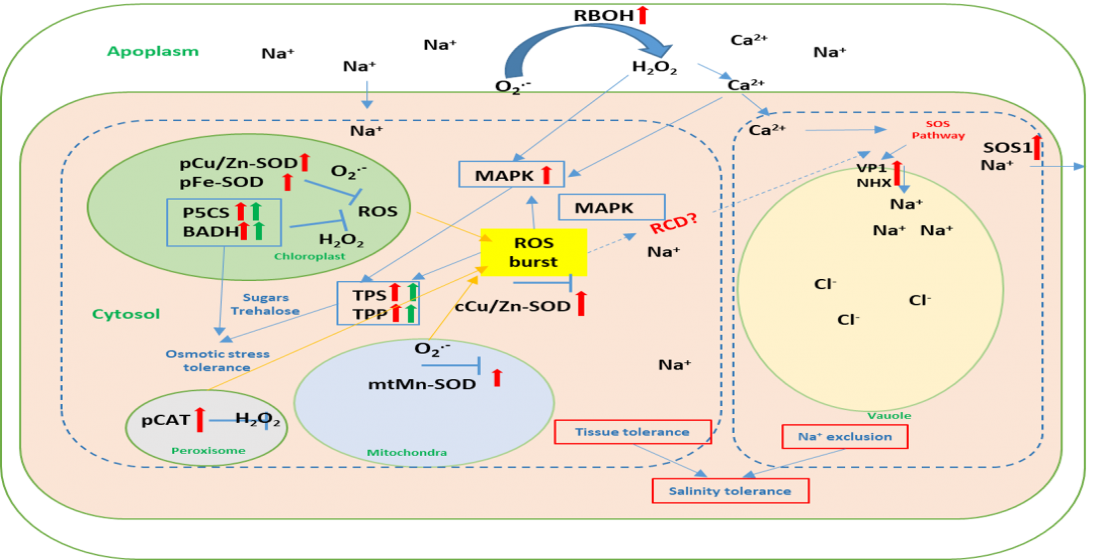The response of salt tolerant wheat genotype (Kharchia 65), and sensitive cultivars (HD2687, HD2009, WL711) to vegetative stage salinity stress (for 4 weeks) were studied at 1.1 (control), 9.1 (S1) and 14.2 (S2) dSm-1 salinity levels. Based on relative change in Membrane stability, PSII efficiency, retention of chlorophyll and carotenoid contents, Kharchia 65 showed better tolerance to salinity than other genotypes considered. To understand the role of different component mechanisms, expression of genes involved in ion exclusion, antioxidant defence and compatible osmolyte synthesis were analysed. Expression of SOS1 (plasma membrane Na+/H+ antiporter), NHX (vacuolar Na+/H+ antiporter), Ionic (sodium exclusion) and tissue tolerance (Sodium compartmentation, compatible solute accumulation and antioxidant defence) mechanisms were analysed in leaves of the genotypes after 4 weeks of salinity stress. Expression assay and the content of respective constituents indicated that apart from the well-known ion exclusion ability, Kharchia 65 also showed high level of tissue tolerance resulting in high early vigour and maintenance of growth rate afterwards. In Kharchia 65, sensing of salinity stress at plasma membrane activates NADPH Oxidase (RBOH) genes and generate ROS at apoplast. Apoplastic ROS triggers calcium influx and activates calcium signaling genes of SOS pathway (SOS1 and NHX). ROS generated from organelles chloroplast, peroxisome and mitochondria triggers cellular oxidative burst. ROS and calcium activates MAPK genes and downstream transcription factors, NAC and bZIP. MAPK signaling induces cellular antioxidant and compatible osmolyte biosynthesis and imparts tissue tolerance to salinity.

